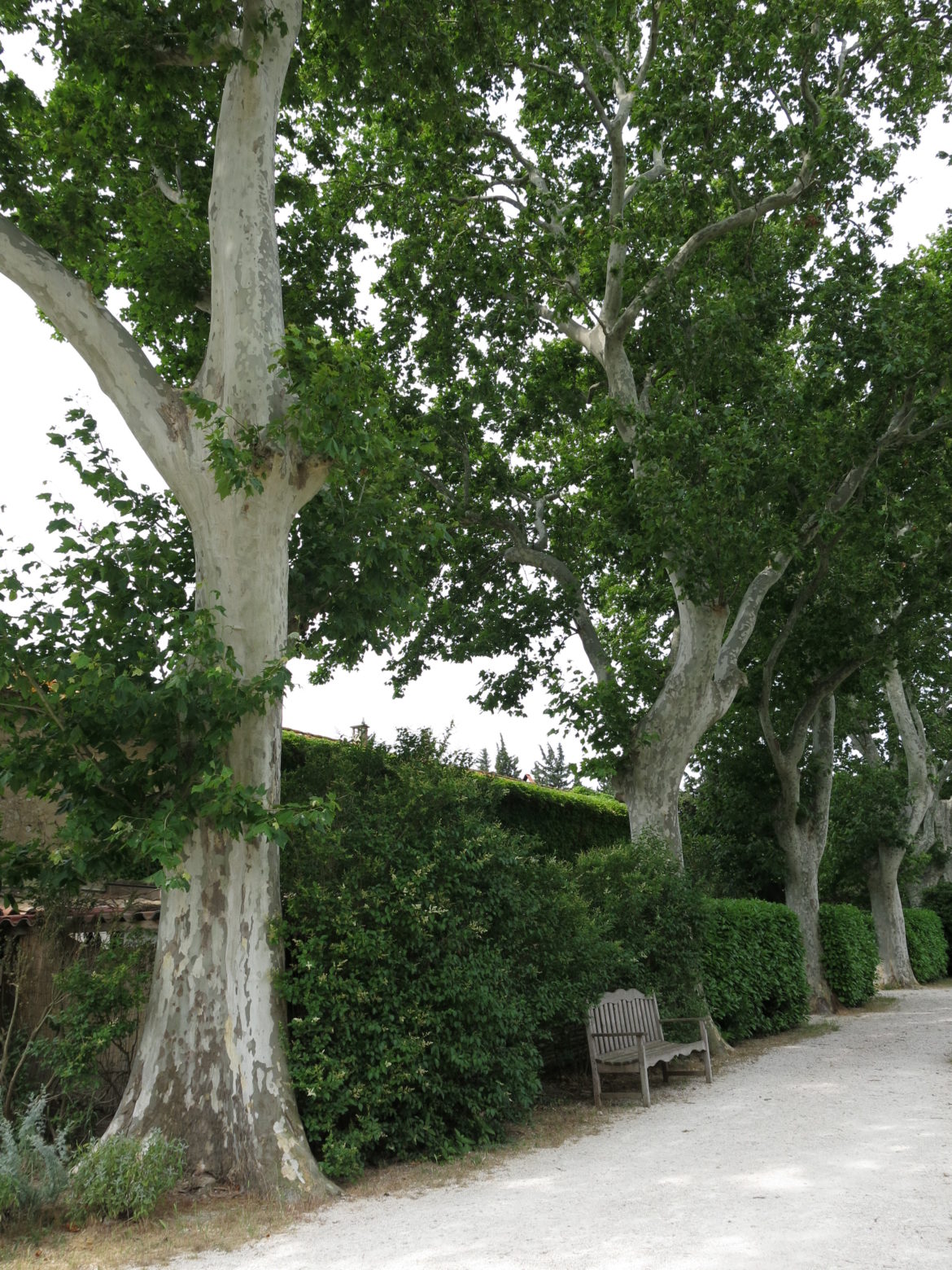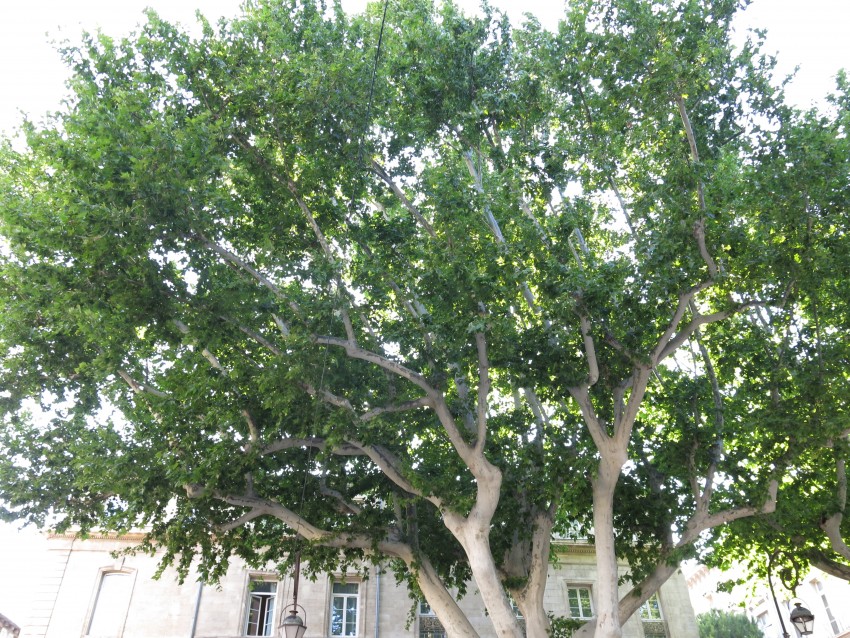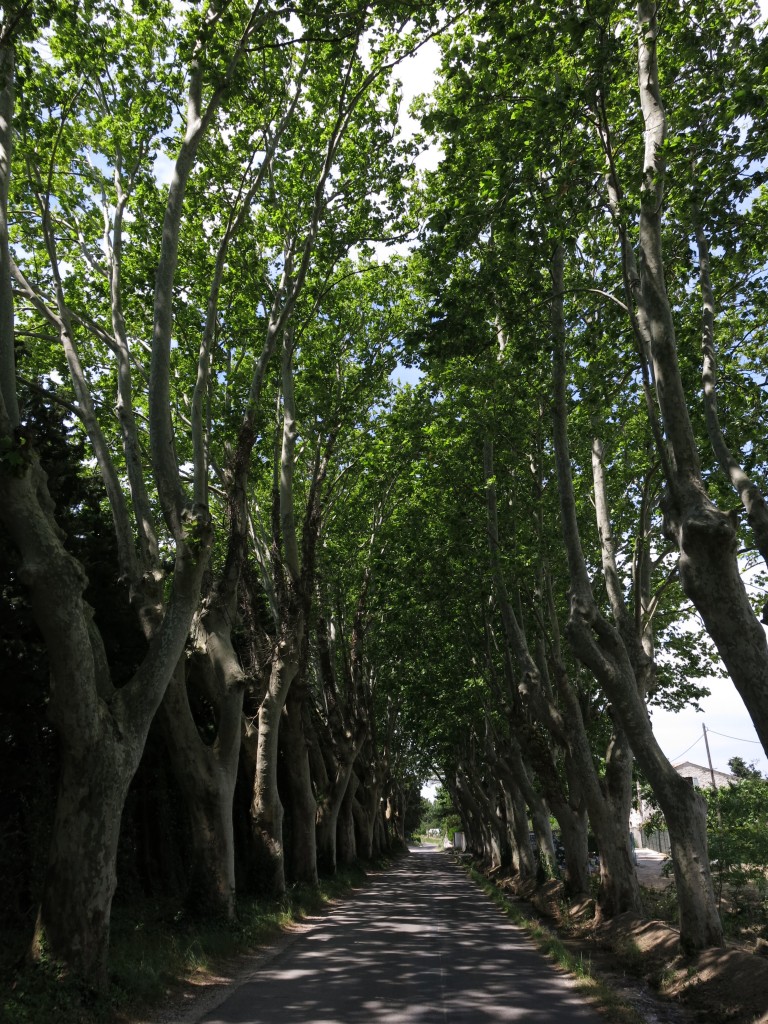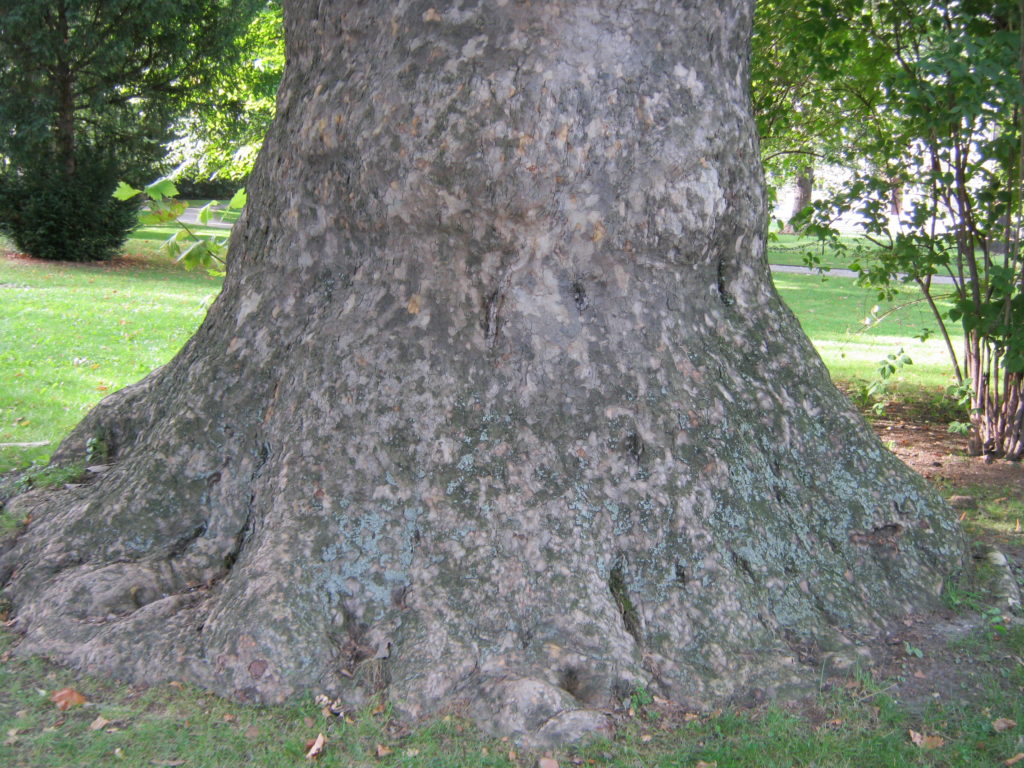Summertime spells heat and sun for most of us in temperate climate zones. To cool off, humans and animals alike trek to water, and seek shade under cool tree canopy.
A popular deciduous shade tree is the Plane tree, or Sycamore, of the botanical genus Platanus, and the only member of the plane tree family (Platanaceae). This tree grows quickly, and can live a long time. It is also copes better than other trees with pollution, and root compaction. Add to these virtues the fact that mature trees sport an attractive peeling bark,and a rather handsome tree silhouette, and it is no wonder this species has been planted to line streets big and small all over Europe and North America, over the course of many centuries.
Sometimes this tree is subjected to a pruning technique called pollarding, which alters the shape significantly, and produces knobby, stunted, old branches, from which young shoots emerge annually. This technique is traced back to the Middle Ages, when much of the native European forests had been processed into raw material to build cities, churches and ships, and fire wood became scarce in the surroundings of human habitations. Pollarding trees became a source for fast growing kindle and fire wood, as the new branches, in easy reach, were harvested regularly. Today trees are pollarded mostly for aesthetic reasons.
There are several Platanus species native to the Americas and Eurasia, which have been hybridized. A commonly grown hybrid is the London Planetree, Platanus x acerifolia. The original parent for this hybrid has been traced back to the Oxford Botanic Garden in England during the 18th century. A fruit from this source was propagated later on in France, and provided the stock for many beautiful allées, which are still alive today, in cities ( the most famous being the Champs Elysee in Paris), as well as the bucolic French countryside.
The beauty of the Plane tree inspires artists, such as in the aria ‘ombra mai fu’, of the 1738 opera Serse by Georg Friedrich Haendel. It is sung by the main character, Xerxes I of Persia, in which he expresses his admiration for the shade provided by this tree. These are the lyrics:
Frondi tenere e belle
del mio platano amato
per voi risplenda il fato.
Tuoni, lampi, e procelle
non v’oltraggino mai la cara pace,
nè giunga a profanarvi austro rapace.
Ombra mai fu
di vegetabile,
cara ed amabile,
soave più.
Tender and beautiful fronds
of my beloved plane tree,
let Fate smile upon you.
May thunder, lightning, and storms
never bother your dear peace,
nor may you by blowing winds be profaned.
Never was a shade
of any plant
dearer and more lovely,
or more sweet.
The most moving rendition of this aria is performed by the gifted German counter tenor Andreas Scholl. Sit back, close your eyes, and enjoy with an open heart:





Leave a Reply